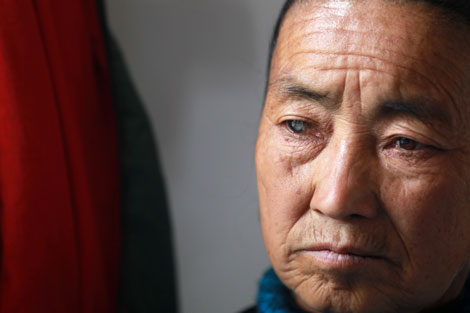Pollution measures for public feedback
Updated: 2011-11-17 07:06
By Li Jing (China Daily)
|
|||||||||
BEIJING - The Ministry of Environmental Protection started gauging public opinion on revised air quality standards on Wednesday, following widespread calls for the government to provide more information on pollution.
The new standards will, for the first time, include readings of concentrations less than PM2.5 (particulate matters smaller than 2.5 micrometers), a major cause of haze harmful to health, the ministry said in a website statement.
| ||||
Tighter rules will also be set for some pollutants already monitored, such as nitrogen oxides and PM10 (particulate matters smaller than 10 micrometers).
The average yearly ceiling for PM2.5 concentrations is set at 35 micrograms per cubic meter while the limit for any one day is set at 75, according to the ministry.
The ministry plans to adopt the new standards nationally by 2016, but key regions, not named, will be subject to the new standards earlier but no timetable was given.
The World Health Organization's (WHO) air quality guidelines indicate that a yearly average reading of PM2.5 under 10 micrograms is deemed safe, while the daily average should not be higher than 25 micrograms.
But the WHO also published recommendations for developing countries to gradually improve their air quality regulations, and China's new standards are in line with those of the first-step targets, according to the ministry.
Environmental Minister Zhou Shengxian has vowed to gradually make the air quality appraisal system conform to internationally recognized standards.
"Including PM2.5 readings is a prerequisite to solve the country's worsening haze problems, and can help reduce the gap between public concern and official ratings for air quality," the ministry said on its website.
Major cities, such as Beijing, Shanghai and Guangzhou, have experienced chronic haze as a result of the surge in vehicle ownership and coal use in recent years.
"China is among the worst polluted places, by particulate matter, in the world and the concentrations of PM2.5 in most Chinese cities is several times higher than the safe levels indicated by the WHO," said Hao Jiming, a professor from the School of Environment at Tsinghua University.
During the past month, public pressure has been mounting for the government to strengthen monitoring and publish more accurate air quality evaluations.
Achim Steiner, executive director of the United Nations Environment Programme, told China Daily that he welcomed the new standards.
"Because, at the end of the day, it is individuals who have to suffer from the bad consequences and the country's health system has to pay," Steiner said.
The Chinese Academy for Environmental Planning has already drafted a plan to reduce PM2.5 concentrations by 10 percent in 12 key city clusters - including the Beijing-Tianjin-Hebei area, the Yangtze River Delta and Pearl River Delta - by 2015.
And some local authorities said that they are already prepared for the new standards.
Fu Qingyan, deputy chief engineer with the Shanghai Environmental Monitoring Center, said Shanghai is likely to become the first to publish PM2.5 readings as early as next year.
"Currently there is no technical barrier to include PM2.5 in air quality monitoring in Shanghai," he said, adding more than 20 monitoring stations are piloting measurements of pollutants, but only for internal testing.
Du Shaozhong, deputy head of the Beijing Municipal Environmental Protection Bureau, said the bureau has long been making preparations to monitor and release PM2.5 readings. But a timetable was not released.
Beijing has 27 monitoring stations capable of reading PM2.5 levels.
Some environmentalists said the new standards reflect the growing influence of public opinion regarding pollution.
"The government's move (to publish PM2.5 levels) finally answers the public's outcry over air quality," said Ma Jun, director of the Beijing-based environmental group, the Institute of Public and Environmental Affairs.
Steiner from the United Nations said he was impressed by active public involvement in pushing for better air quality and supervising the government.
Only with public involvement can China really reduce pollution, he said.
"I'm glad to see the country is shifting from having a problem to having an opportunity," Steiner said.
Zheng Xin, Wu Wencong and Wu Yiyao contributed to this story.













